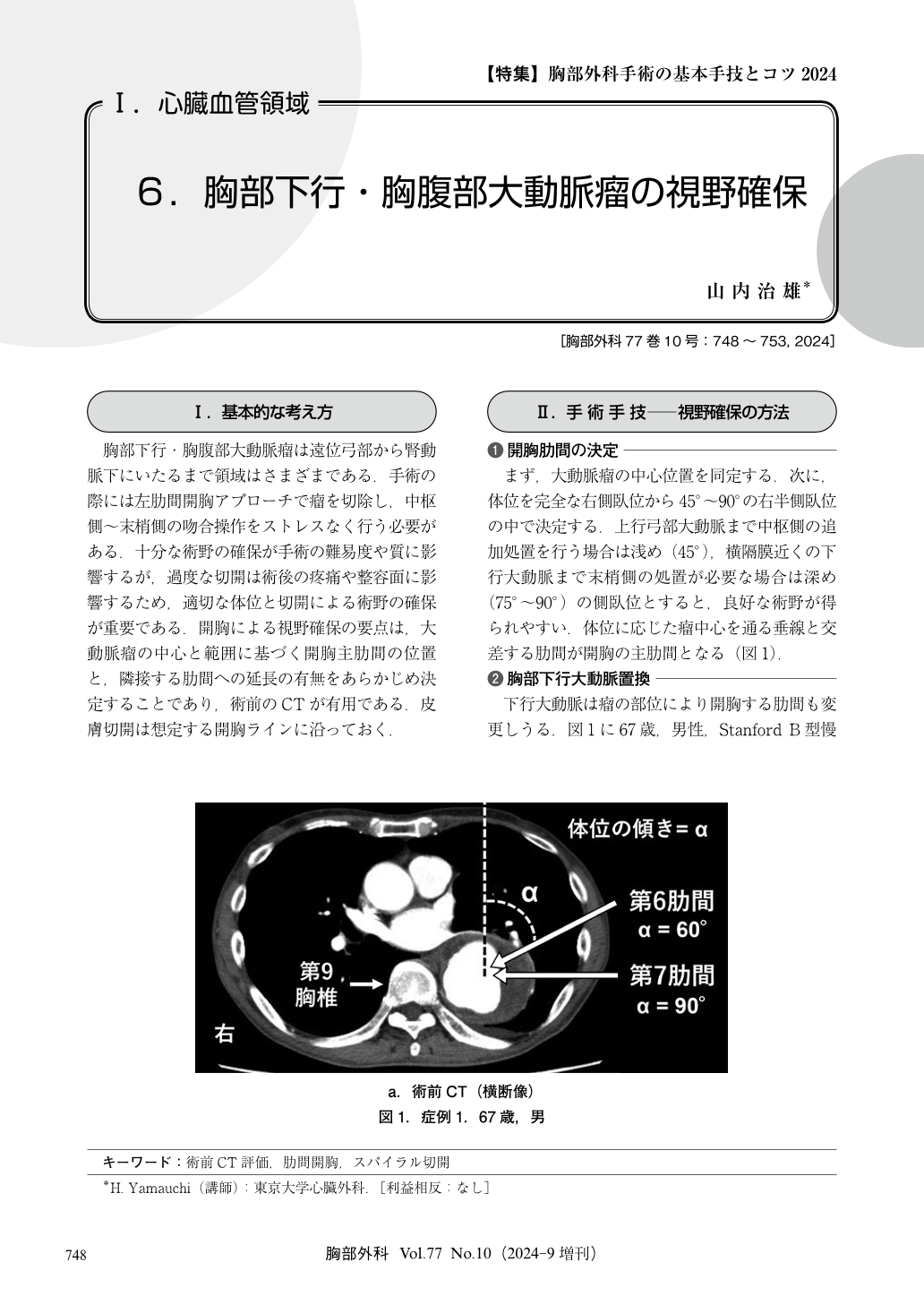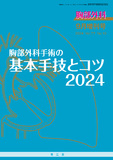Japanese
English
- 有料閲覧
- Abstract 文献概要
- 1ページ目 Look Inside
- 参考文献 Reference
胸部下行・胸腹部大動脈瘤は遠位弓部から腎動脈下にいたるまで領域はさまざまである.手術の際には左肋間開胸アプローチで瘤を切除し,中枢側~末梢側の吻合操作をストレスなく行う必要がある.十分な術野の確保が手術の難易度や質に影響するが,過度な切開は術後の疼痛や整容面に影響するため,適切な体位と切開による術野の確保が重要である.開胸による視野確保の要点は,大動脈瘤の中心と範囲に基づく開胸主肋間の位置と,隣接する肋間への延長の有無をあらかじめ決定することであり,術前のCTが有用である.皮膚切開は想定する開胸ラインに沿っておく.
Left thoracotomy with spiral incision is conventional approach for the repair of descending and thoracoabdominal aortic aneurysms. Because the aneurysms’ locations and ranges are various, case-oriented approaches including body postures and the positions of thoracotomy are necessary. Preoperative computed tomography assessment of aneurysms is important for decision making of both operative indication and approach. Given the patient laid in a right semi-decubitus position, the crossing point of the vertical line from the aneurysm and the thoracic wall is the center of intercostal thoracotomy. Depending on the replacing range of the aneurysm, the incision is extended into the contiguous intercostal spaces with crossing ribs. For total arch replacement from left thoracotomy, additional transverse or oblique sternotomy from left 4th to right 3rd or 4th intercostal space may be effective to expose proximal arch. For thoracoabdominal aortic replacement, the costal arch is transected in the 6th or 7th intercostal level and a retroperitoneal space is dissected to expose the aneurysm. For one-staged total aortic replacement from ascending to thoracoabdominal aorta, straight incision with rib-cross approach may be effective. By incising subtotal intercostal muscles along thoracotomy, preservation of the latissimus dorsi muscle is possible and effective to spare collateral flow of spinal cord.

© Nankodo Co., Ltd., 2024


